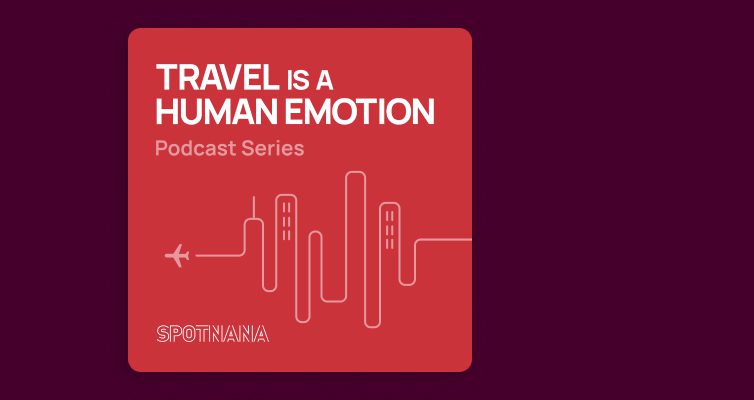What Is a GDS?

If you’ve spent any amount of time learning about corporate travel, you’ve probably heard the term GDS, or global distribution system.
The GDS plays a key role in connecting travelers and travel agencies with content and inventory from global travel suppliers.
Let’s have a look at what exactly a GDS is, why GDSs were created, and some of the current limitations of GDSs that impact traveler experiences.
What is a GDS?
A GDS is a digital system that travel agents and other providers use to access flight, hotel, and car rental rate information, book trips, and manage reservations.
By connecting to a large number of travel providers, GDSs allow for access to a broad variety of travel inventory and content from one centralized point.
GDSs use a text-based interface that’s a remnant of 1960s mainframe technology. These “green screen” systems use EDIFACT (Electronic Data Interchange for Administration, Commerce and Transport) codes and agents navigate them using keyboard commands. GDS companies have introduced more modern graphical user interfaces (GUIs), but many veteran agents still use traditional interfaces.
When and why were GDSs invented?
The first GDS launched in the early 1960s when American Airlines partnered with IBM to create Sabre (Semi Automated Business Research Environment). Initially known as computer reservation systems, GDSs allowed airlines to view their inventory in real-time and make reservations.
By the late 1970s, major air carriers introduced computer-based travel agent portals that provided paid access to the GDS. This innovation meant agents no longer needed to look up flight schedules and prices via hard-copy reference books or call airlines to learn availability and place bookings.
GDS owners allowed other airlines, as well as hotel and car rental companies, to join their systems in the decades that followed. Airlines divested ownership in the GDSs in the late 1990s and early 2000s, creating independent travel distribution companies.
Why business travelers deserve more than the GDS
In leisure travel, individuals have incredible flexibility in how and where they book. They can choose from a variety of online travel agencies (OTAs) like Expedia and aggregators like Kayak or Google Flights.
At work, these same individuals are expected to book travel using a travel agent or a self-service online booking tool that sources content from a GDS.
This arrangement does a disservice to the traveler and to companies that have to manage and pay for travel. Here’s why:
Not all travel content is available through the GDS
Airline retailing is no longer about just seats on a plane. Carriers want to be able to sell ancillaries like checked baggage, priority check-in, and lounge access alongside air tickets. It’s been one of the decades-old promises behind the International Air Transportation Authority’s New Distribution Capabilities (NDC) standard. NDC air content, though, is still missing from the GDSs because of outdated retailing technology.
Independent hotels have also struggled to bring content to the GDS. Unlike airlines, which pay a 2 percent commission for a flight booking, a hotel pays a 20-30 percent fee on GDS bookings. That makes it one of the most expensive and cost-prohibitive customer acquisition channels for independent hotels and small chains.
Rail is another GDS sore spot. More business travelers, particularly in Europe, are exploring rail as a greener alternative to air travel. But there’s no easy way for corporate travelers and agents to seamlessly book rail journeys the way they do flights and hotels.
Most serviced apartment or corporate housing providers aren’t on the GDS, either. GDSs are better at displaying and selling short-term transient travel than they are long-term stays. Most often, providers who do want to be on the GDS have to connect via a third-party, known as a switch company.
GDSs accept and pay incentives to bias content
Remember how airlines started making GDSs available to travel agencies in the 1970s? As part of signing on to a GDS, agencies had to pay a subscription fee. If agents increased their purchase volumes through the GDS, their subscription costs went down. No surprise, agents began booking GDS airlines over non-GDS airlines. GDSs also charged incentive fees to other airlines who joined their system to bias displays by promoting certain airlines over others and increase agency sales for participating airlines.
These commercial arrangements have evolved over the years but continue to limit choice and affordability in business travel.
A host of regulations have come and gone over the decades to try to bring oversight to the GDSs. Yet biased content and incentives are still very much a part of the way GDSs operate.
This means business travelers may not see all available options based on agency financial incentives and may be pushed to select more expensive fares or options.
Lagging technology diminishes traveler experience
The shopping experience for a business trip is not the same as the shopping experience for a vacation.
In the leisure environment, individuals are used to crafting their ideal trip by choosing from hundreds of options that are geared toward their taste and preference.
In the corporate environment, the experience is rigid and restricted. For the last decade, the travel industry looked to NDC as a way to bring personalized bundles to corporate airline retailing. But NDC has struggled to gain traction, owed in large part to fixed dynamics and commercial agreements between GDSs, agencies, and airlines.
The future of travel
It’s time to get out of the ‘60s and modernize the infrastructure of the travel industry.
At Spotnana, we’ve built our Travel-as-a-Service Platform to deliver comprehensive access to unbiased global travel content. When you have more choices, you can find and select the best rates, saving your company money and creating a better experience for travelers.
Our platform is designed to connect to numerous GDSs, aggregators, and more to provide the most convenient and affordable travel options. We also build direct connections with airlines, hotel chains, rental car companies, and rail companies to deliver personalized offers to travelers.
Corporations use Spotnana’s integrated online booking tool and travel management platform to provide unparalleled experiences to business travelers within the structure of a corporate managed travel program. We never bias content or receive volume-based incentives from GDSs. This means travelers choose from the widest possible array of travel inventory inside of a delightful online booking experience. We also enable agents to provide better service to travelers through advanced servicing tools that are built on the same platform as our online booking tool and use the same data.
We also provide partners with an open marketplace to deploy their services and turn-key white label solutions for providing the best travel experiences to their own customers.
To find out more about how changes to technology and distribution can cut costs and improve the traveler experience, watch our on-demand webinar in partnership with BTN: How to fix broken traveler experiences that drive up costs.







